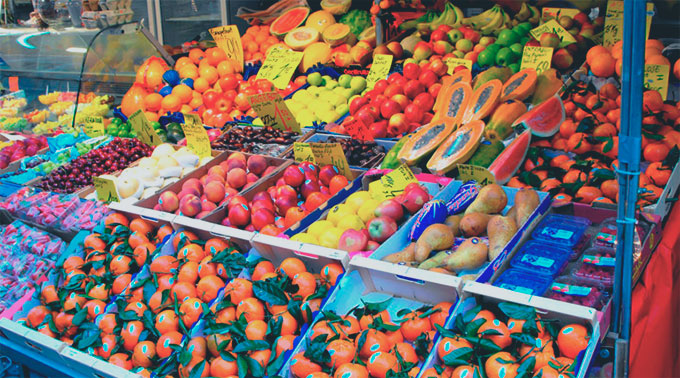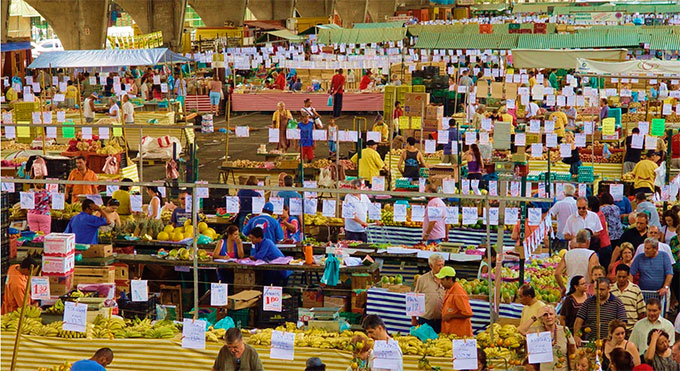In addition to the wholesale activity, the Companhia de Entrepostos e Armazéns Gerais de São Paulo (CEAGESP) also opens space for the retail trade of fresh produce, through the so-called varejões< /strong>.
Fruits, vegetables, fish, eggs, poultry, cereals and other products typical of open-air markets, such as pastries, snacks, breads, cakes and snacks are offered to the final consumer.
The first retail store started its activities inside the Entreposto Terminal São Paulo (ETSP) in September 1979. Initially, it only operated on weekends. In December 1994, the night varejão went into operation, to offer another shopping alternative to the consumer.

Today, CEAGESP’s retail stores are held three times a week (Wednesday, Saturday and Sunday) and handle more than 250 tons of products per month. Similar to fairs, but with quality assurance and price control, they take place at CEAGESP SP and at the Sorocaba unit.
The Wholesale CEAGESP is the most popular, after all, CEAGESP’s commercialization is aimed at wholesale, with a minimum purchase quantity being established, so that many products can only be purchased in closed boxes or bags. Despite this, the company opens its doors to any person or company to make their purchases, including the final consumer, following the rules of time for this public.
Varejao hours CEAGESP in São Paulo
PBC Pavilion: Wed 2pm to 10pm (Gate 7)
MLP Pavilion: Sat from 7am to 12.30pm and Sun from 7am to 1:30pm (Gate 3)
How Varejão CEAGESP works
The retail store is more practical for the final consumer, it is organized along the lines of an open-air market. On Saturday and Sunday mornings, the Mercado Livre do Produtor (MLP), a huge warehouse with approximately 20 thousand square meters, brings together more than 1,000 fruit, vegetable, vegetable, fish, eggs, poultry and cereal stalls, among other items. This format allows the common public to have access to quality products that are often difficult to find, without spending the fortune charged by emporiums and fine markets.
On Wednesdays, there is the so-called night varejão, although it is open from 2pm to 10pm. It is a smaller version of the weekend market, with 400 stands, and slightly higher prices. One of the differentials is the street food stalls, among them, ham sandwich, acarajé, skewers and pastel.
In addition to the extended opening hours and free parking, check out three other highlights of the night retail below:
- Ready salad: the Verduras Wakuda stall sells washed and packaged lettuce, as well as kits with the ingredients to make tabbouleh and yakisoba. There are chopped chives. It’s on the edge of the fair, close to the cereals, spices and flowers.
- Plant stall: in addition to selling flowers in vase or bouquet, it offers spices such as basil or rosemary. It’s at the end of the retail store, near the parking lot.
- Payment: Most booths accept credit and debit cards.

Address and Contact Varejão CEAGESP SP
- Av. Dr. Gastão Vidigal, 1946 – Vila Leopoldina – SP – CEP 05316-900
- Phone: (11) 3643-3700
CeageSP End of Year Retail Store
Those who tend to leave their shopping to the last minute have an excellent opportunity to make sure they don’t miss anything for Christmas and New Year’s Eve dinner. The Capital Warehouse Department (DEPEC) has a special schedule to attend the regulars of the traditional retail stores (night and weekend) that take place at CEAGESP São Paulo.
To meet this demand, there is a retail sale at the Mercado Livre do Produtor Pavilion (MLP) on the eve of the holidays: on 12/24 and 12/31, it varies according to the year, but mostly from 7 am to 12 pm. DEPEC also informs that CEAGESP São Paulo will be closed at Christmas and New Year. The reopening of the gates will only take place at midnight on 12/26 and 01/2.
Wholesale and retail difference
Some people confuse the words wholesale and retail. To clarify, the difference is that wholesale sales are made to legal entities (stores, businesses, industries, hospitals, schools, etc.), and in large quantities, with lower values because they are resold. Retail is the normal trade as we know it.
